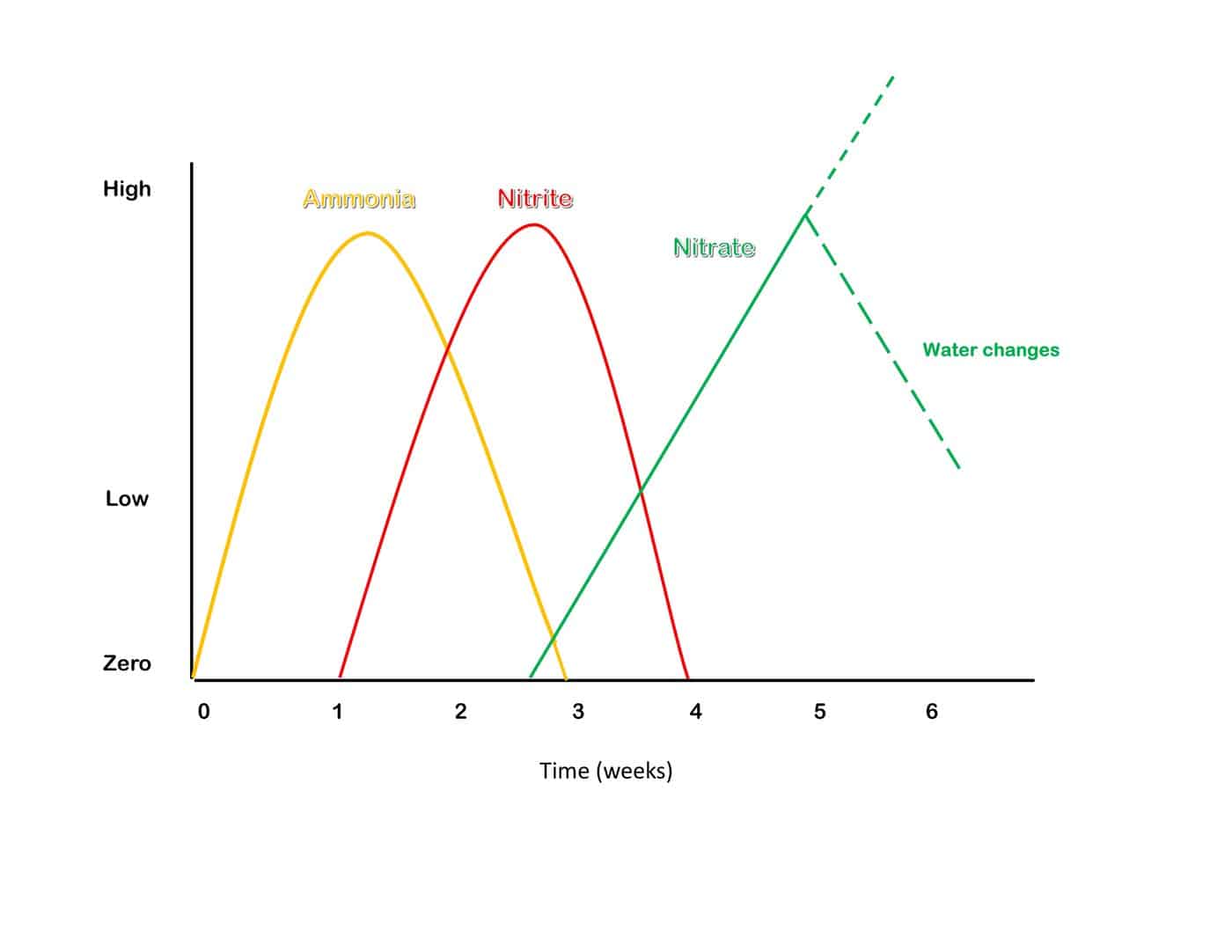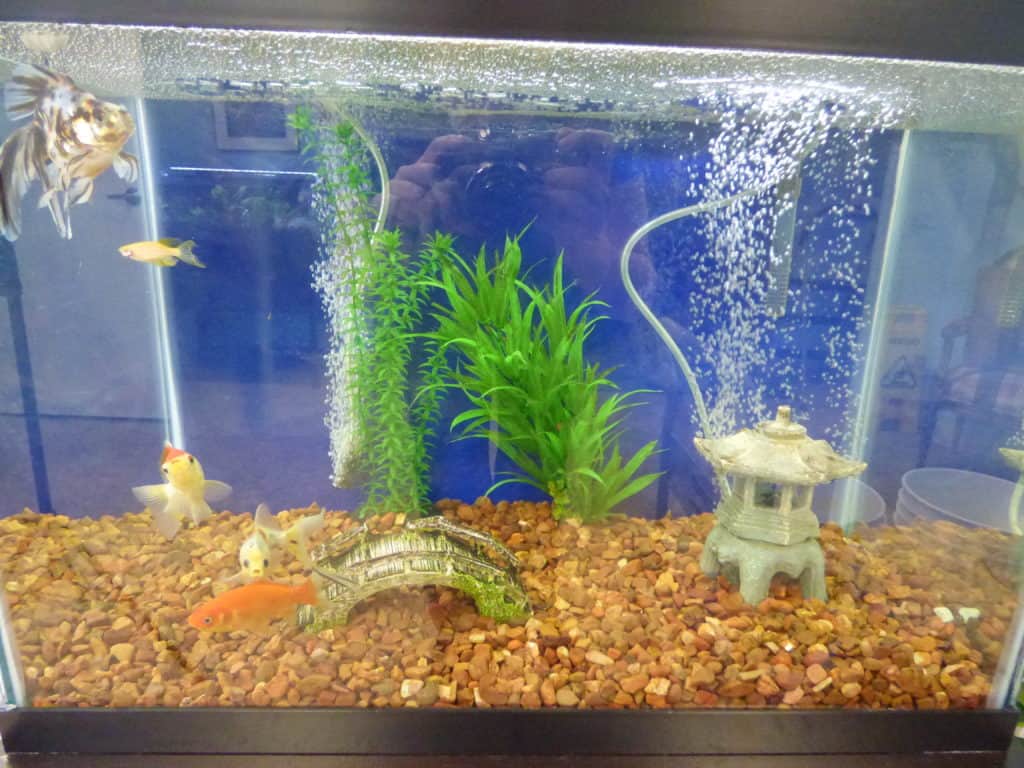** This post contains affiliate links that give us a small % of $$ for our recommendations. **
Sick at The Store
It’s sad to say that many pet fish stores may be incubating serious diseases without any clinical signs. Many new pet fish that pass through wholesalers and distributors are not routinely tested for any diseases or move too quickly for disease to start showing signs. What then happens is the fish you thought was healthy, gets sick within a week of coming home with you.
How to Fix: Quarantine
It’s a world of instant gratification and most people NEVER quarantine their new pet fish. We understand that having a separate tank and equipment is a hassle, but it is the BEST thing you can do for your new fish. I GUARANTEE it will save you money, time and many fish lives. There is no prophylactic medication that will treat everything. And just because you trust your dealer, doesn’t mean they might not have sick fish and not know it.
How to Fix: Call Your Veterinarian
Is this self-serving? Sure, but it’s my website. Yes, fish veterinarians exist to help your sick, injured and new pet fish. Our office can help you if you are in Nevada or California. If you are in another state, check out the American Association of Fish Veterinarians. If that doesn’t work, contact your local exotic veterinarian. If you have a vet you like working with on your fluffy pets, they can consult with our staff no matter where they work.
New Tank Syndrome
This is the #1 reason people quickly enter and leave the fish-keeping hobby. You get all excited, pick out your tank, decorations and new pet fish, and put it all together, only to have it crash a few weeks later. Unfortunately, tank cycling is often skipped over when you’re at the pet store. There are many “instant” start bacterial products that lure unsuspecting fish keepers into thinking their tank will be safe. I am very sorry to tell you that most of these products do absolutely nothing. There is one product we tested that shortens your cycle slightly, but, on average, it will take 4-6 weeks until your tank is out of the danger zone.
How to Fix: Go Slow
No one wants to hear this, but starting with only a few fish will save you. Don’t dump all your new pet fish in at once. If you can, start with a bigger tank; the more water you have, the more wiggle room you have for your ammonia, nitrite and nitrate levels. (Note: a bigger tank doesn’t necessarily mean more fish!). And don’t listen to that 1 gallon per 1” of fish rule! We’ll tell you the answer to that question, but you’re not going to like it.
How to Fix: Test Your Water
Buy a test kit and know how to use it. No, not those stupid strip tests, but a legitimate liquid-based test kit. Record your levels DAILY during your setup phase and watch your tank follow this pattern:

You can send an already established tank into a New Tank Syndrome by replacing your biological filter media. I don’t care what the box says, you NEVER want to replace your filter media.
My Fish is “Constipated”
I’ll bet you $1,000 that is isn’t. In our 6+ years of practice, do you know how many “constipated” fish I have diagnosed? ZERO. Freshwater fish are physiologically impossible to become “constipated.” Here’s how it works: most other animals (not living in water), become constipated due to not enough “lube” in their intestines. You get more by hydrating and eating fibrous foods. Freshwater fish are superhydrated. (Pull out old high school physics notes.) The environment a fish lives in is hypoosmotic to their bodies. This causes diffusion of water into their bodies, mainly through the gills, to create equilibrium.
Their kidneys and gills work overtime to get rid of the EXCESS liquid. The “long, stringy, white” poops that are all over the internet and misdiagnosed as “parasites,” are actually fecal casts with no food inside. Fish intestines = super hydrated and lubed ≠ constipated. And those “constipated” bettas are actually overfed or in cold water and cannot digest their pellets and have a giant poo pellet that gets stuck.
How to Fix: Check Your Water Quality
95% of our patients are not living in clean water. And no, you can’t tell your water is okay just by looking at it! (A glass of acid and a glass of fish water look very similar.) For more information on water quality testing and parameters, click here.
How to Fix: Feed Appropriate Diet
We see “constipation” issues, most commonly related to buoyancy, more often in fancy goldfish. They may be cute, but by physical manipulation of their structure, often their swim bladder function may be limited. Goldfish like to eat and are physostomous fish, where they have a pneumatic duct between their esophagus and swim bladder. Floating fish need sinking food and sinking fish need floating food. Fish “wheelchairs” may be cute for negatively buoyant fish, but a tight-fitting harness will erode the skin mucus and make your fish sick. Swim assist equipment are only temporary to allow the fish to inflate their swim bladder naturally by sucking in some surface air. Here’s one of our star patients and her buoyancy assistance device. Green peas may work to alleviate some of the symptoms, but they don’t work why you think they do!


Pingback: Fin Rot in Pet Fish - Aquatic Veterinary Services
Pingback: Fin rot in fish – causes, symptoms, treatment and prevention